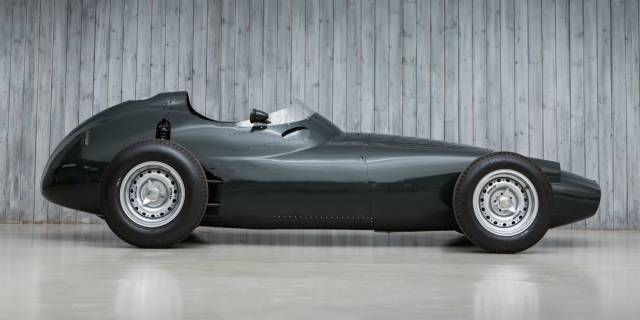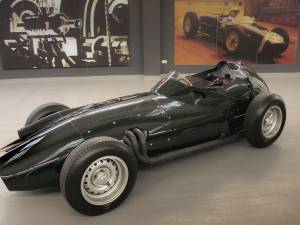BRM P25 classic cars for sale
The BRM P25 defines the post-war British approach to Formula One: technical innovation focused on reliability and performance. With a 2.5-litre straight-4 powering this pivotal racing car, the P25 is a direct result of lessons learnt from earlier complex and less reliable machinery. This car marks an essential chapter in motorsport history.
Search results

BRM P25 listing references from Classic Trader
Below you will find listings related to your search that are no longer available on Classic Trader. Use this information to gain insight into availability, value trends, and current pricing for a "BRM P25" to make a more informed purchasing decision.

1959 | BRM P25
History of the BRM P25
British Racing Motors launched the P25 as their answer to the lessons taken from the problematic V16 era. Built and raced between 1956 and 1960, the P25 was designed at a time when British engineering was intent on challenging continental dominance in Formula One. Its arrival in the paddock brought British GP efforts more in line with their continental rivals, laying the groundwork for the marque's later competitive streak. The focus on mechanical simplicity and robustness after the complicated V16 project resulted in a car that could be run reliably while extracting strong on-track performance.
Model History
As the second chassis designed by BRM, the P25 replaced the ambitious but flawed V16 project. There was no direct predecessor matching its configuration, given that the V16 had a radically different powertrain. The P25 would itself be succeeded by later models that continued the emphasis on refining British GP technology, with advancements focused on evolution rather than revolution, drawing directly on the engineering priorities established with the P25.
Highlights of the BRM P25
The most distinctive feature of the P25 is its 2.5-litre engine, a robust four-cylinder built to endure full race distances with minimal mechanical intervention. Its significance lies not only in providing a bridge between British chassis design and competitive engine performance but also in refining the way British teams approached car construction post-V16. The P25 contributed to the new era of British reliability and racing efficiency.
Technical Data
Special Editions and Collectible Models
There are no recorded special editions of the BRM P25, as was typical of Grand Prix machinery of the era. Each chassis, however, was hand-assembled and slightly unique due to period manufacturing tolerances and continual development through its competition lifespan.
Engine and Performance, Transmission and Handling
Powered by a 2.5-litre straight-four that delivered about 275 horsepower, the P25 relied on its simplicity to achieve durability on race day. The engine’s broad torque curve and the car's lightweight layout made it agile, especially effective on tighter circuits common in 1950s GP racing. The direct, mechanical steering and minimal body roll aided driver control at high speeds. These attributes, combined with the calculated simplicity of the car, represented a departure from the more complex and fragile setups seen in previous BRM models. Only the P25 is present under the BRM manufacturer code on our platform, highlighting its singular relevance in this area.
Interior, Comfort, Exterior and Design
The P25 is pure function: a single-seater monocoque body prioritised structural rigidity and access to mechanical components. Thin aluminium panels reduced weight and allowed engineers to make trackside repairs efficiently. Cockpit ergonomics were designed around the needs of the era's drivers—minimalist but clearly laid out for visibility and quick access to controls.
Custom paint finishes varied slightly, but most P25s raced in British Racing Green. Equipment was basic by modern standards, but every element was designed to be durable and replaceable, a necessity in the world of 1950s GP racing.
Summary
The BRM P25 stands as BRM's defining Formula One entry of the late 1950s, setting a new course for British racing engineering. On our marketplace, the P25 accounts for the entire BRM supply and demand, underscoring its exclusive status among historic racing cars. Featuring a purposeful design, reliable 2.5-litre engine, and historical importance rooted in its Grand Prix exploits, the P25 remains a focal point for enthusiasts seeking British motorsport history.
